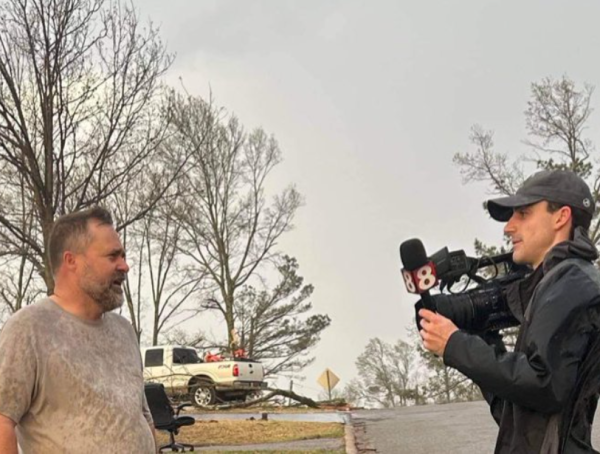WKRG-TV News Director Gene Kirkconnell has more than 30 years of TV news experience and says he has reviewed more than 10,000 demo reels in his career. Kirkconnell says a demo reel is not just a video resume; it’s a “trailer for the movie that is your career.” For television reporters and anchors, it serves as a showcase of their skills and a marketing tool with a specific goal: to land that dream job.
“We want to see some magic. We want to have a connection with that person. We want to be pleasantly surprised in some ways and have our initial confidence in the prospect of that applicant being confirmed to move forward,” Kirkconnell said.
But how do you make the perfect demo reel? How long should it be? What should be included? What should be cut out? How should I deliver it and make it work for me?
“The secret formula to the perfect demo reel is really in the format: applying a certain methodology, gathering the material for it and putting it together to distribute it to the hiring managers,” he said.
However, for Kirkconnell, the most important element is the length. He emphasizes the importance of brevity and says a perfect demo reel should be 2.5 minutes long, and tightly packed with essential elements. He says, that way, more hiring managers will be willing to watch your entire demo reel because they don’t need to invest more time in watching it.
The structure he proposes includes five key components:
1. Hello (Introduction): Clear, confident self-introduction. Thank the viewer, disarm them with the time element, and create curiosity about what’s to come.
2. Montage of On-Camera Work (20 Seconds): Showcase your best on-camera moments—standups, reporting samples—showcase confidence, emotion, and energy. Quality trumps quantity here.
3. Package/Story 1 (45 Seconds): A well-crafted story displaying your storytelling ability, technical skills, and relevance to the job you’re applying for.
4. Package/Story 2 (45 Seconds): Another story, demonstrating versatility. It could be a different genre, showcasing your ability to handle various reporting styles.
5. Thank You and Call to Action (20 Seconds): Express gratitude, reference your earlier content briefly, and encourage viewers to explore more of your work.
Kirkconnell advises avoiding including any other element in the demo reel. If extras, such as full screens of information, really need to be included, make sure to put them at the end.
Furthermore, he stresses the importance of metadata when publishing the video. “Utilize YouTube’s features to make your video searchable. Include relevant keywords like reporter, anchor, journalist and broadcasting. This way, even while you sleep, YouTube works to put your reel in front of hiring managers” he said.
While the basic format remains the same, tailoring your reel for specific positions is essential. For example, for anchors, incorporate anchor samples. If you’re applying for a combined anchor/reporter role, ensure your reel showcases both skills effectively.
“Remember that if you do another story or create a better piece of content next week, you can change your demo reel. It doesn’t have to be static. It must work for you and for the area you are interested in your career,”he said, adding that you should not be afraid to have more than one.
In essence, Kirkconnell’s advice boils down to this: your demo reel is your ticket to the journalism world. Make it compelling, concise and tailored. With the right formula and some creativity, your demo reel can be the game-changer that propels your journalism career to new heights.
Note: The image used for this story is part of the demo reel for reporter DeAndria Turner.








